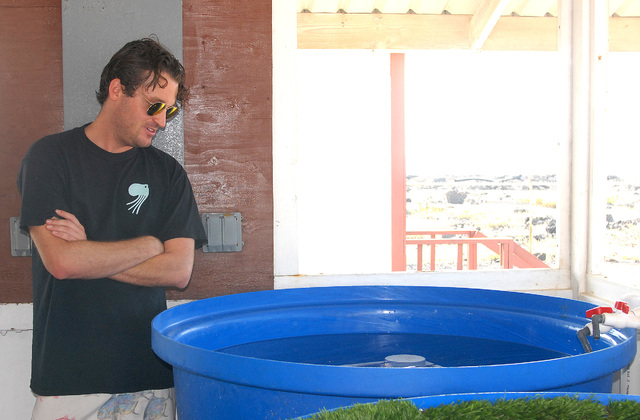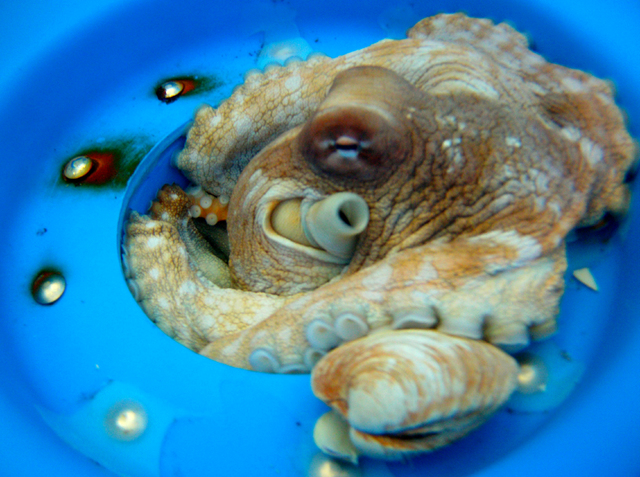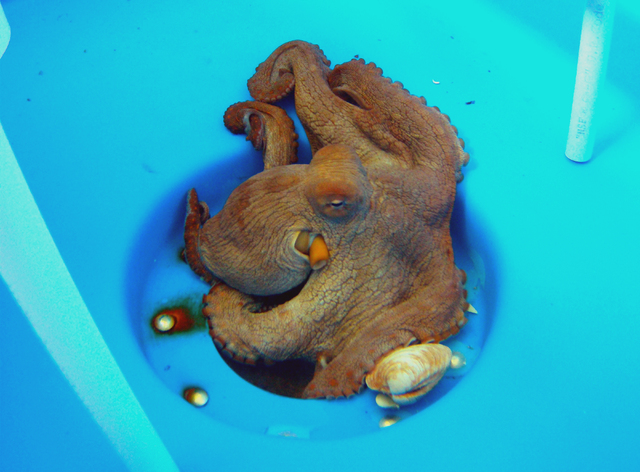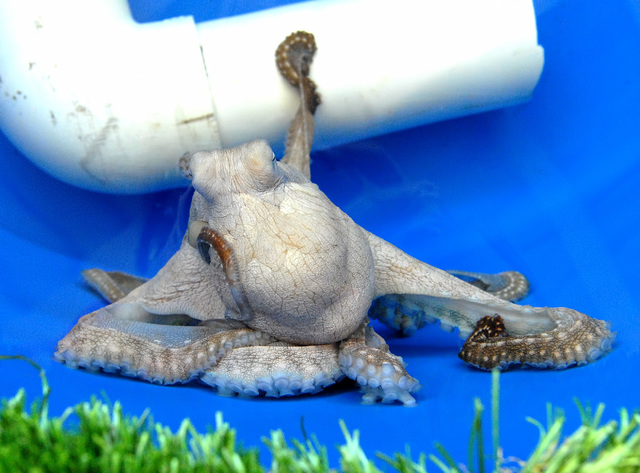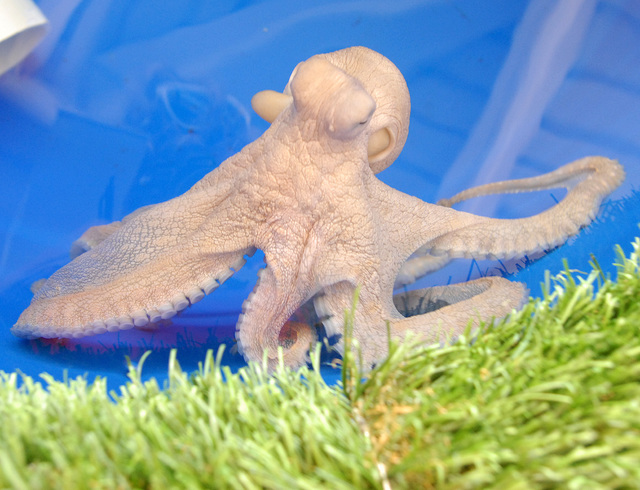KEAHOLE — A new venture looking to successfully rear octopus on land has set up shop at the Natural Energy Laboratory of Hawaii Authority.
“One of the animals that has been on the radar for aquaculture is octopus,” said Jake Conroy, CEO and president of Kanaloa Octopus Farms. “There’s a lot of potential for them and, hopefully, I can rear them and provide them to aquariums — I would love to be able to supply the markets with sustainable sources and hopefully move up to a scale to provide octopus for eating.”
Fish farms now produce more than 100 million tons of fish each year around the globe, according to the United Nation’s Fisheries and Aquaculture Department. Octopus is highly desirable and commands high prices throughout its distributional range, however, they have for the most part escaped aquaculture. In 2013, more than 46,000 pounds of common octopus were fished worldwide, according to UN data.
The octopus is a good candidate for aquaculture because of its brief lifecycle and prolific reproduction and growth rates. Many, like the ones Conroy is using, take less than a year to reach maturity; and females lay a strand of hundreds of thousands of eggs.
“I believe there is a market,” said Conroy about the need for sustainably raised octopus. “Octopus are fascinating animals and almost all aquariums have them — and that’s just the ornamentals.”
Conroy started the venture about four months ago using his own money to lease a small facility with a gorgeous view and ample seawater at Keahole Point. To supplement/fund the work and additional research in the near-term, he plans to offer tours of the quaint facility until things take off.
It’s the first such commercial farm in Hawaii and the United States, he said. The only other mention of such a farm is Mayab Mollusks, a Mexican cooperative that started about five years culturing octopus on the Yucatan coast. Beyond a couple of articles in 2010 and 2013 noting it plans commercial production, little more is mentioned about the project or its success.
“Scientists have been breeding them, but there’s been no real, full-fledged farms,” Conroy said.
A 2010 Hawaii Pacific University graduate who holds a bachelor’s degree in marine biology, Conroy has conducted research for HPU’s Ocean Institute’s development of captive culture technology for the yellow tang and the state Division of Aquatic Resources’ collector sea urchin project in which hundreds of thousands of the marine echinoderm were released off Oahu to protect coral reefs from invasive seaweeds.
“I really liked the day-to-day work and I wanted to start my own farm,” he said about why he chose to move away from research for others to start the farm on the Kona Coast.
A current sales listing on the farm’s website vales a daytime octopus at $199.99.
Currently at NELHA, he has four broodstock, individuals used in aquaculture for breeding purposes, which include two male and one female daytime octopuses and one night octopus at his NELHA facility. In the near future, as tanks arrive, he plans to increase the broodstock to include 10 specimens. All of the octopus are harvested alive and without injuring the animal in local waters.
About a week ago, Conroy introduced a pair of the daytime octopus and believes the two cephalopods copulated. He’s already breeding hermit crabs collected from the coast to provide food for small, planktonic octopus paralarvae.
“They were all over each other,” he said. “I think, I’m hoping she’ll be getting ready to lay some eggs.”
But that will take about 30 to 40 days, giving Conroy some time to prepare for the new arrivals, including researching the best ways to supply nutrition via the crab larvae and house the six-armed, two-legged marine species.
“I’m learning so much,” he said.
Info: https://kanaloa-octopus-farm.myshopify.com.








